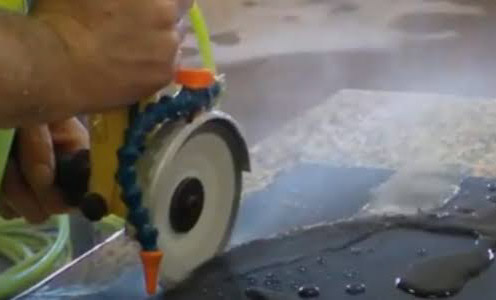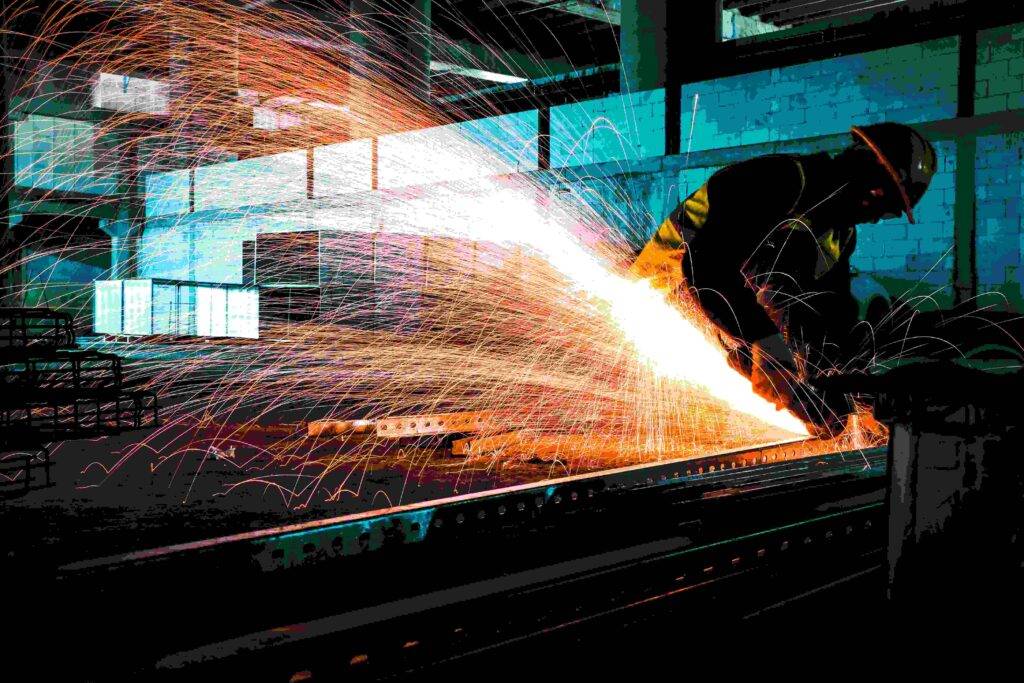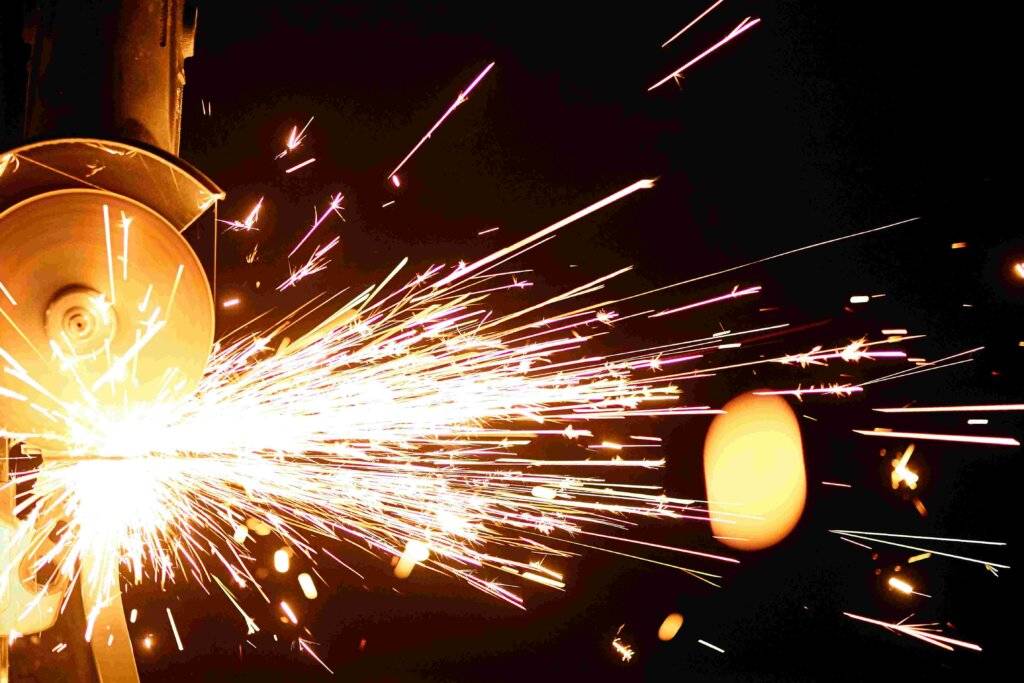Angle grinders are versatile tools commonly used in construction, metalworking, and woodworking industries for cutting, grinding, and polishing various materials. While they are typically used with abrasive discs for metal or masonry work, some projects may require the use of water to control dust and cool the cutting surface.
In this article, we will explore the benefits and techniques of using water with an angle grinder to optimize its performance and ensure a safe working environment.
Why use water
Using water with an angle grinder can significantly reduce airborne dust particles, making it a safer option for both the operator and the surrounding environment. The water acts as a lubricant, cooling the cutting surface and preventing overheating, which can extend the life of the abrasive disc and improve the overall efficiency of the tool.
Additionally, water can also help to achieve a smoother finish and prevent the material from cracking or chipping during the cutting process.
Whether you are working on a concrete, stone, or tile project, understanding how to properly use water with an angle grinder is essential for achieving professional results.
In the following sections, we will discuss the different methods of water attachment, safety precautions, and tips for maximizing the benefits of using water with an angle grinder.
The Benefits of Using Water with Angle Grinders
There are several advantages to using water with an angle grinder:
- Cooling: Water helps to cool down the disc or grinding wheel, preventing it from overheating and deteriorating. This extends the tool’s life and reduces the risk of warping or cracking.
- Dust Suppression: Water binds dust particles together, minimizing airborne dust and creating a cleaner work environment. This is especially beneficial when cutting or grinding concrete, stone, or other materials that generate a lot of dust.
- Improved Cut Quality: Water can help to lubricate the cut, resulting in a cleaner and more precise cut. This is particularly important for delicate tasks or when working with high-quality materials.
Types of Angle Grinders for Wet Grinding
There are two main types of angle grinders that are designed for wet grinding:
Grinders with built-in water delivery systems:
These grinders have a water hose attachment and a guard that directs water flow to the grinding wheel.
- Grinders that can be used with a spray bottle: For grinders that aren’t equipped for wet grinding, a simple spray bottle filled with water can be used to periodically cool down the disc and suppress dust.
Safety Precautions When Using Water with Angle Grinders
When using water with an angle grinder, it’s important to follow proper safety precautions:
- Use a ground fault circuit interrupter (GFCI): A GFCI outlet helps to prevent electrical shock hazards in wet environments.
- Ensure proper ventilation: Even with water suppression, some dust may still be generated. Use proper ventilation to eliminate airborne particles.
- Wear eye protection: Splashing water and debris can be a risk to your eyes. Wear safety glasses or a face shield when using a grinder with water.
- Use the correct disc or wheel: Not all discs or wheels are designed for wet grinding. Ensure you’re using the appropriate equipment for the task.
Water for angle grinder safety.
When operating an angle grinder, it is crucial to prioritize safety measures to prevent accidents and injuries. One important safety consideration is utilizing water to cool down the blade during use.
By incorporating water into the cutting or grinding process, the heat generated from the friction can be significantly reduced, minimizing the risk of overheating and potential injuries.
Water also helps to control the dust particles created during cutting, which can be harmful if inhaled. Overall, the use of water with an angle grinder can enhance safety by creating a safer and more controlled work environment for the operator.
Grind with water for cooling.
To effectively grind with water for cooling, it is essential to ensure a steady and consistent flow of water throughout the grinding process. This can be achieved by attaching a water hose or using a water container placed strategically near the cutting area to provide a continuous stream of water.
By doing so, the water can effectively cool down the blade as it comes into contact with the material being worked on, preventing overheating and extending the lifespan of the blade. Additionally, the water helps to suppress the dust generated during grinding, maintaining a clean and safe workspace.
When grinding with water for cooling, it is important to monitor the water flow and ensure that it is sufficient to keep the blade at a safe operating temperature while also promoting efficient cutting or grinding.
Reduces dust, protects lungs.
By utilizing water with an angle grinder, not only does it aid in cooling the blade and preventing overheating, but it also plays a crucial role in reducing the amount of dust generated during the grinding process.
This reduction in dust is beneficial for maintaining a clean workplace environment, as excessive dust can lead to respiratory issues and pose health hazards to individuals working in the vicinity.
By keeping dust levels to a minimum, water helps in protecting the lungs of operators and others present, ensuring a safer and healthier working environment.
This added benefit of using water with an angle grinder not only enhances the efficiency of the grinding process but also prioritizes the well-being of individuals involved in the task.
Water control prevents overheating issues.
Maintaining proper water control when using an angle grinder is crucial as it effectively prevents overheating issues that can arise during the grinding operation.
Overheating not only affects the performance and longevity of the blade but also poses a safety risk to the operator. By continuously supplying water to the grinding surface, heat generated from the friction between the blade and the material being worked on is dissipated, ensuring that the blade remains at an optimal temperature.
This controlled temperature not only improves the cutting efficiency but also prevents the blade from becoming too hot, which in turn reduces the likelihood of accidents and blade warping due to excessive heat. Proper water control is, therefore, an essential aspect of using an angle grinder safely and efficiently.
Enhances precision and prolongs lifespan.
One of the key advantages of using water with an angle grinder is that it enhances precision and prolongs the lifespan of the grinding tools. The consistent flow of water serves to cool down the blade and the material being worked on, which in turn minimizes the risk of the blade overheating and losing its sharpness.
This controlled cooling effect not only ensures a more precise and smooth cutting or grinding action but also prevents premature wear and tear on the blade, thus extending its overall lifespan.
By maintaining a stable and cool working environment, the quality of the work produced is improved, resulting in cleaner cuts, smoother surfaces, and a more efficient grinding process.
Overall, the use of water with an angle grinder not only enhances precision but also contributes to the longevity of the equipment, making it a valuable practice for professionals and hobbyists alike.
Conclusion
By following these tips, you can safely and effectively use water with your angle grinder to achieve better results, extend tool life, and create a more dust-free work environment.
In conclusion, the utilization of water with an angle grinder serves as a valuable technique in various industrial applications, providing a means to enhance both the efficiency and safety of the grinding process. By effectively reducing dust emissions and cooling the workpiece, this method minimizes health hazards and prolongs the lifespan of the cutting disc.
Moreover, the utilization of water assists in achieving smoother finishes and greater precision in intricate grinding tasks. Thus, incorporating water with an angle grinder not only optimizes performance but also upholds occupational health and safety standards in professional settings.



